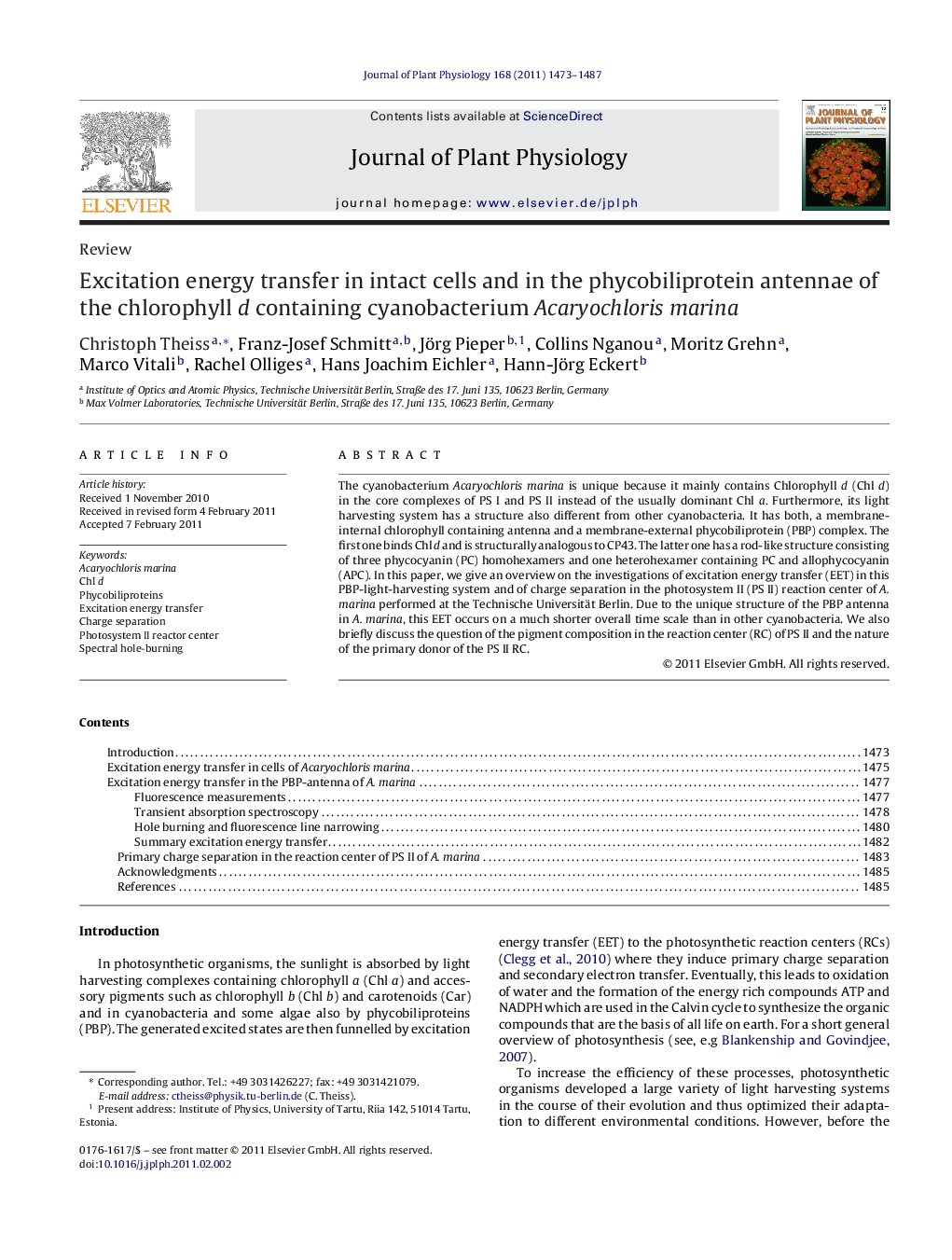| Article ID | Journal | Published Year | Pages | File Type |
|---|---|---|---|---|
| 2056487 | Journal of Plant Physiology | 2011 | 15 Pages |
The cyanobacterium Acaryochloris marina is unique because it mainly contains Chlorophyll d (Chl d) in the core complexes of PS I and PS II instead of the usually dominant Chl a. Furthermore, its light harvesting system has a structure also different from other cyanobacteria. It has both, a membrane-internal chlorophyll containing antenna and a membrane-external phycobiliprotein (PBP) complex. The first one binds Chl d and is structurally analogous to CP43. The latter one has a rod-like structure consisting of three phycocyanin (PC) homohexamers and one heterohexamer containing PC and allophycocyanin (APC). In this paper, we give an overview on the investigations of excitation energy transfer (EET) in this PBP-light-harvesting system and of charge separation in the photosystem II (PS II) reaction center of A. marina performed at the Technische Universität Berlin. Due to the unique structure of the PBP antenna in A. marina, this EET occurs on a much shorter overall time scale than in other cyanobacteria. We also briefly discuss the question of the pigment composition in the reaction center (RC) of PS II and the nature of the primary donor of the PS II RC.
